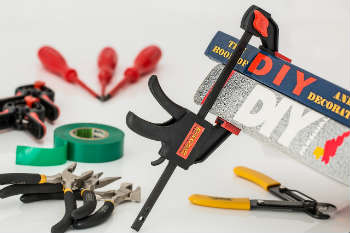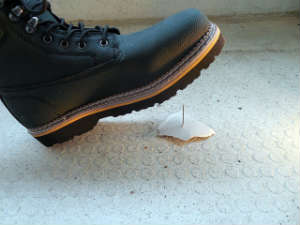Since 1991 nail gun accidents have caused related injuries to triple in number. In 1991, there were 4200 injuries related to nail guns, while in 2005, there were 14,800 nail guns accidents. These tools are easily obtained at hardware and department stores across the United States and can be the in the hands of anyone.
Dangerous construction and do-it-yourself (DIY) tools are becoming cheaper and are more frequently used by amateurs. In particular, nail guns are widely used throughout the United States by individuals who haven’t been trained to properly use the device.
DIY Man Accidentally Shoots A Half-Inch Nail Into His Chest
A Wisconsin man can testify to the perilous nature of a nail gun. The man accidentally shot himself in the heart with a three and a half-inch nail. He positioned the nail gun on a section of wood that he wasn’t capable of safely reaching. Unfortunately, he accidentally let the nail gun fall and it shot a nail into his chest.
He drove himself to the emergency room where a medical team praised him for leaving the nail in place. Removing it may have hindered his recovery. The doctors also remarked that if the nail had hit him just a little more to the right, that the accident would’ve been much more severe. Fortunately, he has recovered without complications after a successful open heart surgery.
Amateur Nail Gun User Injury Statistics
There is a wide selection of nail gun manufacturers and different types of nail guns, including single and multi-firing guns and nail guns with removable safety features. Duke University examined the injuries related to nail guns for their periodical, ‘Morbidity and Mortality Weekly.’ The study revealed that amateurs without proper training regarding nail gun use account for forty percent of all injuries documented in American emergency rooms and hospitals.
In 2006, the United States Consumer Product Safety Commission released a public safety warning concerning the non-professional use of nail guns. This public safety notice was released due to the tools tendency to fire without warning.
The study urges the industry to promote safety instructions for nail guns, but also for adequate training and clearer warnings. Nail guns are simple to use, but this ease of use doesn’t mean consumers should skip proper training. Consumers and unfamiliar DIY proponents often take for granted that they need safety protocols to protect them from being injured by nail guns.
Nail Gun Safety Basics
The Occupational Safety and Health Administration (OSHA) states that there are 37,000 nail gun accidents every year in the United States that result in visits to the Emergency Room. Two out of every five residential construction workers suffered a nail gun injury over a four-year period.
OSHA and NIOSH have developed a plan to help decrease the frequency of nail gun accidents. A critical element in avoiding injury involves knowing the difference between the different type of triggers on varying nail guns. The International Staple, Nail, and Tool Association divides different triggers into four categories: full sequential trigger, contact trigger, single sequential trigger, and a single actuation trigger. These varying tools all fire differently and the first step to safety is becoming familiar with how the nail gun fires.
OSHA’s Tips for Nail Gun Safety
Nail guns will need to be handled with the same respect given to handguns. The following tips should be adhered to when using a nail gun:
- Have comprehensive training and review new equipment
- Set strict nail gun use procedures
- Always use personal protective equipment
- Report and discuss incidents that nearly cause an injury on construction sites
- Make certain first aid and medical resources are available
These convenient and easy to use tools offer a quick way to complete a construction or DIY project, but they are accompanied by a high-risk of injury not to be taken lightly.






